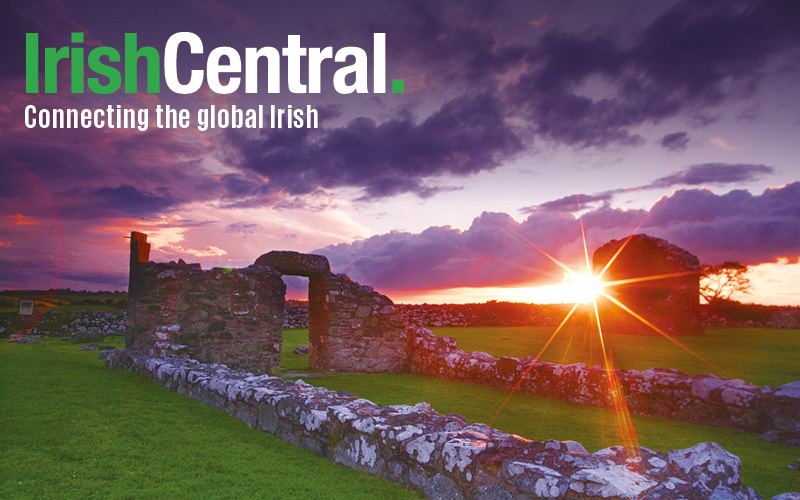No one in Ireland has contributed to the rigors of toponomy, the study of place names, as St. Patrick has. As the patron saint of Ireland one would expect that his name would have a lasting quality, but he beats all competition by a country mile.
St. Patrick, if the legacy is true, must have traveled every inch of the country. There isn’t a county in Ireland that hasn’t something or other called after the saint. It seems that he climbed many a hill, from which he preached, converted the pagans, and gazed in wonder, so it’s said, at the wondrous country below, flowing with milk and honey.
When he moved on, he left his calling card behind him: a virtual topography of his presence. Thus, we get Ard Patrick, Knockpatrick, Slieve Patrick: high, hill and mountain, dedicated to the presence of him who would be saint.
And while he traveled and preached and converted, he left a host of minor miracles in his wake. He caused spring wells to trickle up from underground even in the most unlikely places, water that not only cured the thirst but had power to heal the sick. They still exist, though the curative power may have dwindled. Yet they have a day in the sun when, on the saint’s day, pilgrims trek to the well called after him and lay requests in silent prayer as they circle the trickle of water.
Though the wells are much dwindled now, and the curative power has faded too, their folklore still exists in the toponomy record. And somewhere in every county there’s a Patrickswell. If there isn’t one, as a great devotee of the saint once declared, there should be.
The naming doesn’t stop after hills and mountains and holy wells. Those were just the beginning, formed at a time that still had a throwback to the historic tradition of the saint’s presence and reputation, formed in the aftermath of his sainthood. But there were other periods that outshone the tradition.
One was the establishment of the Gaelic Athletic Association, formed to preserve the native Irish games, which were in danger of being pushed aside by English versions, especially soccer and cricket. Hurling, Gaelic football, and handball clubs, sprang up across the land and when it came to naming them there was really no contest. St. Patrick won hands down.
There wasn’t a county in the country that didn’t have several clubs named after the saint. St. Patrick’s Hurling Club, St. Patrick’s Football Club, St. Patrick’s Handball Club. Mind you, being named after the saint didn’t bestow any miraculous success upon a club that so honored him. In fact, such was the lack of success that a harassed GAA chairman suggested that St. Patrick was a soccer man.
Naming the sports club after the saint wasn’t solely for Gaelic athletic clubs. When Ireland divorced from its neighbor across the Irish Sea, St. Patrick was again in the forefront of national ardor.
Nothing so represented the zeal and the spirit of the new stand-alone nation as did the ancient saint. He had a second coming. Any activity that required a place to meet looked to the saint when a name was needed. A whole host of organizations spread across the land: brass and reed bands, debating societies, bridge clubs, dramatic societies, dance halls, etc., etc., all called after St. Patrick, in his second coming.
And it didn’t stop there. In the national fervor, and to strike a blow at the auld enemy, names that were redolent of the former occupation were quietly revoked when the opportunity arose.
A renovated clutch of houses, once called Bedford Close was re-named St. Patrick’s Crescent. A square dedicated to a British general who put down a native rising in a foreign land, became Patrick Square. And the mounted figure of another general was spirited away in the dead of night and no one knew anything about it, though rumor had it that heavy machinery, working through the night, was needed to take it away.
Now, carried on the shoulders of immigrants, the traditional St. Patrick will be celebrated worldwide and everywhere the green will be worn. Here in Birr, Co Offaly, I will wear green in my lapel. And it matters not whether the sprig I wear is really a shamrock or an ordinary piece of clover. Who can tell the difference? And anyway, reality invariably defers to tradition.
Tom Nestor
[email protected].




Comments